Recent Articles
Popular Makes
Body Types
2019 Toyota C-HR Road Test and Review
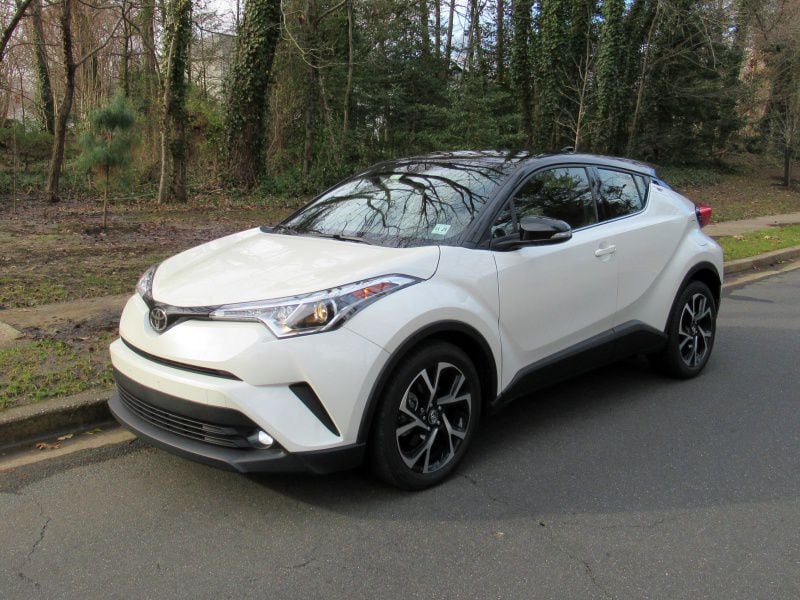
2019 Toytoa C HR White Front Three Quarter 2 BH ・ Photo by Brady Holt
Most of the time, cars that look sporty are designed to prioritize performance over everyday comfort, utility, and value. That means that if you want a head-turning appearance but don’t need jaw-dropping acceleration and handling, you’re often out of luck. That is unless you like the looks of the 2019 Toyota C-HR, which applies the silhouette of a sporty coupe to the body of a five-door subcompact crossover — creating a high-style ride that’s easy to live with every day.
The C-HR debuted for 2018, but Toyota has acted quickly to make its smallest crossover even more appealing. The updated 2019 model brings a lower base price, a greatly improved infotainment system, and newly optional equipment that includes leather upholstery and a navigation system. The 2019 C-HR starts at $20,995 with a long list of standard safety and convenience features. Let’s go over the details of this uniquely styled subcompact crossover.
Concept-Car Styling
The Toyota C-HR started life as a concept car. Its name stands for “coupe high roof,” and that sums things up pretty well — the design team took a rakish coupe and gave it the elevated seating position and bulging fenders of an SUV. But anyone can build an interesting concept car. The difference is that Toyota made relatively few changes while bringing the C-HR to production.
The main difference is that the production C-HR isn’t technically a coupe. But Toyota kept the theme alive by hiding the rear door handles up by the roof. It’s one of many tradeoffs the C-HR makes between style and functionality. True, this long, slow, sleek car would have had more cargo space and better rear visibility if it were designed as a box — but folks who want an all-business crossover can easily find something better suited to their own needs.
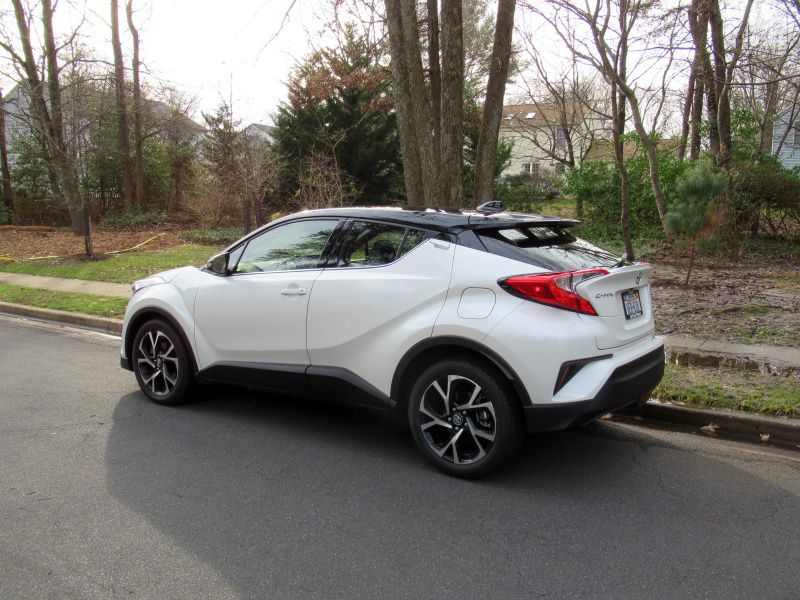
Photo by Brady Holt
Upgraded Infotainment
The 2019 Toyota C-HR’s cabin is more traditional than its exterior. The asymmetric dashboard, piano-black trim with subtly embedded sparkles, and some whimsical patterns on the ceiling and door panels add visual interest — but for the most part, it’s just user-friendly and high-quality. Many subcompact crossovers have very basic interior decor, but the C-HR is quite pleasant, particularly on the tested top-of-the-line Limited model.
The best news about the 2019 C-HR’s cabin is the all-new infotainment system. Its screen grows from 7 inches to 8 inches, its graphics are crisper, and it now supports Apple CarPlay (though not Android Auto) smartphone integration. Unlike other competing models, the big screen is standard even on the base model. Another improvement is that the C-HR’s backup camera now displays on the dashboard screen — the 2018 C-HR had its camera display on a little corner of the rearview mirror. A built-in Wi-Fi hotspot is now available as well, but there’s still just one USB port.
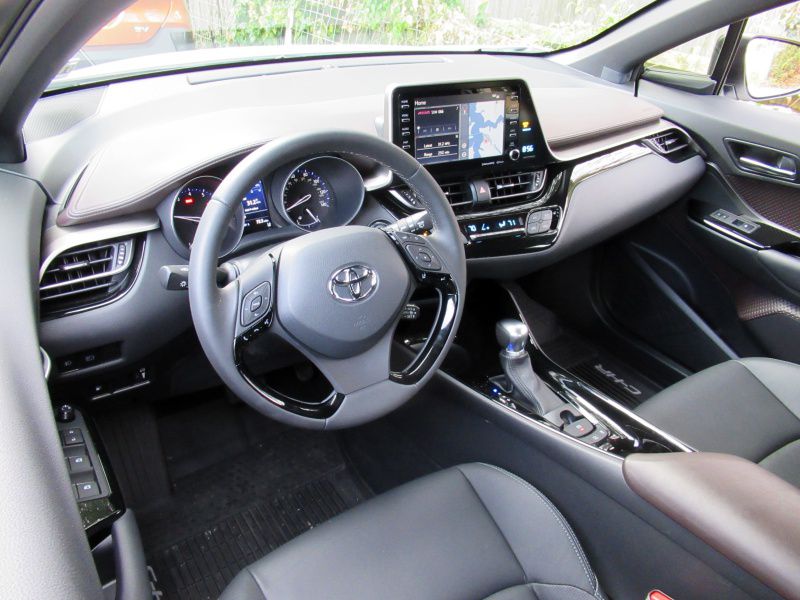
Photo by Brady Holt
Increased Affordability and Variety
Last year’s C-HR was available only in two very similar trims: the XLE ($22,500) and XLE Premium ($24,350). For 2019, the C-HR has a more complete and diverse model range — three trim levels that span from budget-priced to luxurious. That’s the LE, $20,995; XLE, $23,030; and Limited, $26,050.
Every 2019 Toyota C-HR comes nicely equipped with a suite of advanced safety features, the 8-inch touchscreen, Bluetooth, and automatic climate control. The XLE brings alloy wheels (generously sized at 18 inches), keyless entry and starting, a leather-wrapped steering wheel, and blind-spot monitoring, plus — for the first time — SiriusXM satellite radio. The Limited mostly adds luxury features that are also new to the C-HR, including leather upholstery and rain-sensing windshield wipers, along with heated front seats, LED foglights, and some aesthetic tweaks. However, you still can’t get a sunroof, a power-adjustable driver’s seat, or all-wheel drive.
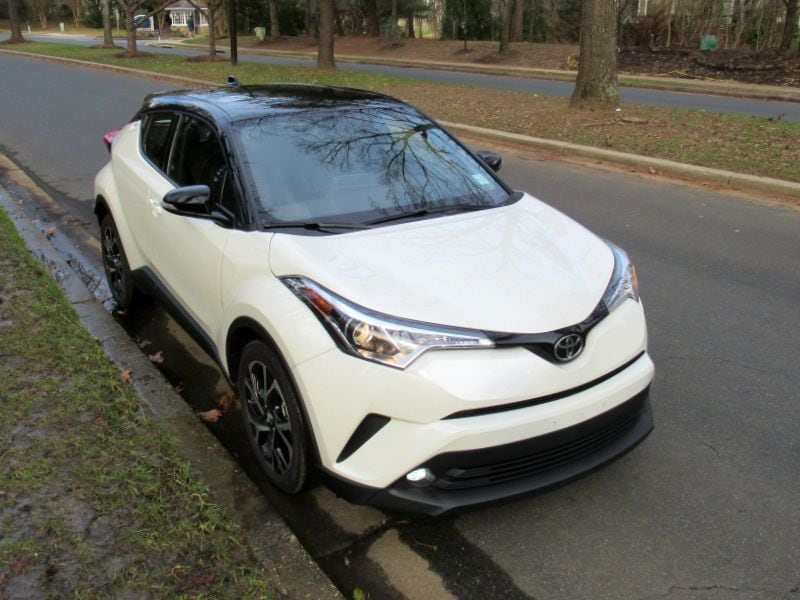
Photo by Brady Holt
Not Super-Spacious, But Comfortable
The 2019 Toyota C-HR has comfortable, supportive front seats. You don’t sit as high as in some crossovers, even in the subcompact class, but you’re still higher off the ground than in a sedan or coupe. That’s good news for your forward visibility and the ease of getting in and out of the car. Rear visibility isn’t great, though — one of the prices you pay for the C-HR’s styling.
The rear seat doesn’t have a ton of extra legroom or headroom, but it’s roomier than you might expect from a small coupe-like vehicle and better than some competing subcompact crossovers. The nicely padded rear cushion also provides generous leg support. Kids might not love the small side windows, though.
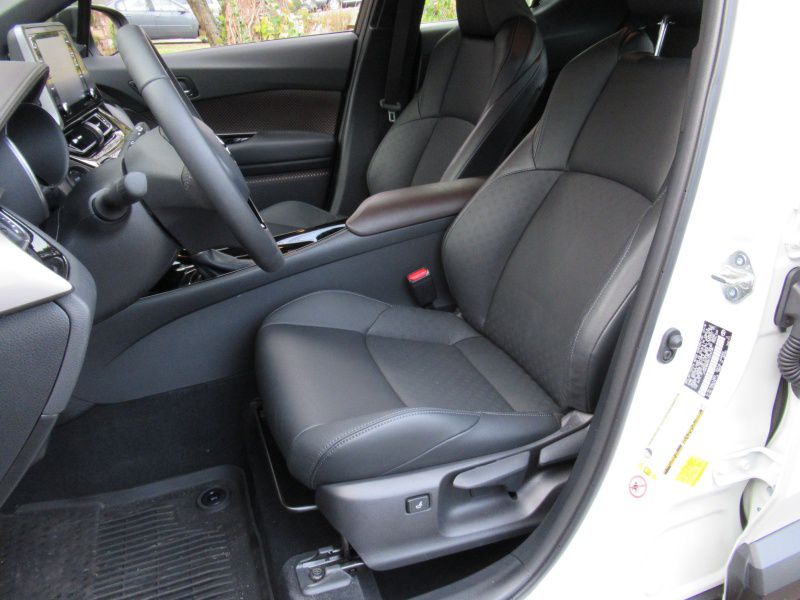
Photo by Brady Holt
Built for the Pavement
The sporty design of the 2019 Toyota C-HR also cuts into its cargo capacity. The C-HR is a little longer than some subcompact crossovers, which gives it a useful amount of floor space behind its rear seat. But the high floor and low, sloping roof limit total volume to 19 cubic feet, and make it harder to fit tall items. The rear seat folds easily flat, nearly doubling the volume to 36 cubic feet. That’s less than most competitors, but much more than you’d get from a sporty coupe. We also liked the fabric cargo cover, which you don’t need to store somewhere when it’s removed.
It’s not only cargo space where the C-HR lags some crossovers’ maximum utility. Unlike most models, the C-HR is offered only with front-wheel drive, with no all-wheel drive option. This is a car that was built for the pavement, and it makes little pretense to the contrary.
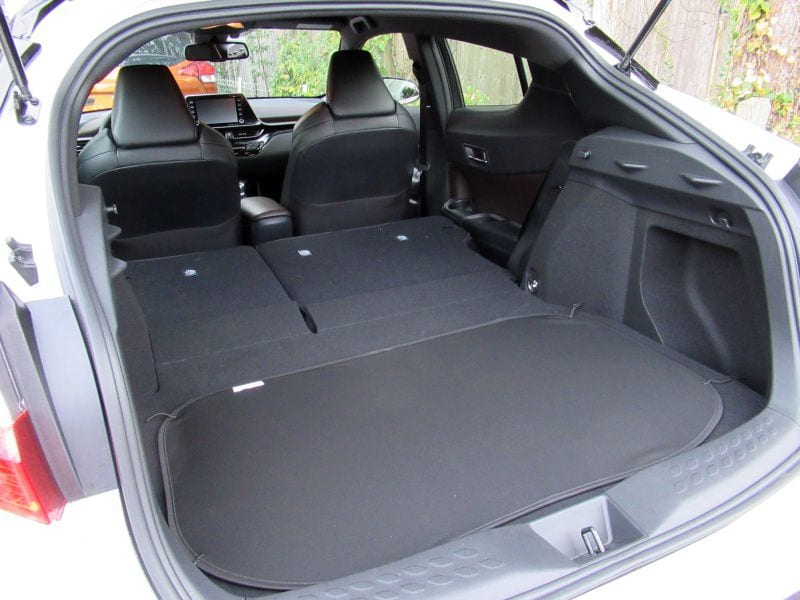
Photo by Brady Holt
Refined Driving Experience
The 2019 Toyota C-HR is more pleasant to drive than most subcompact crossovers. It’s heavier than most, at 3,300 pounds, and that makes it feel solid and substantial for such a small car. The ride is admirably smooth and generally pretty quiet. Also, its sleek shape pays off against boxier competitors by reducing wind noise. However, don’t expect the C-HR to drive like a sports car — it’s agile for a crossover, with responsive and natural-feeling steering, but its driving dynamics prioritize comfort over excitement.
Toyota took a similar path with the C-HR’s engine, which focuses on fuel efficiency over zippy acceleration. Every C-HR trim uses a 2.0-liter four-cylinder with 144 horsepower, paired to a continuously variable automatic transmission (CVT). The C-HR feels peppy right off the line, but the engine gets noisy if you push more. The good news is that the C-HR gets above-average EPA ratings for its class, particularly in urban conditions: 27 miles per gallon in the city, 31 mpg on the highway, and 29 mpg overall.
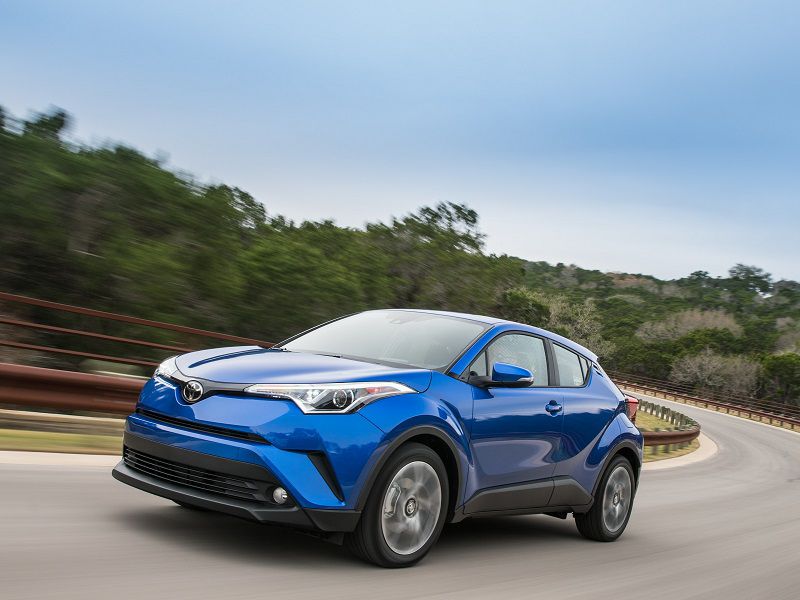
Photo by Toyota
Safety Comes Standard
While most cars sold today offer a wide array of advanced crash-avoidance technology, the 2019 Toyota C-HR goes a step further than the norm: It makes most of this tech standard equipment even on the base model. That means that every C-HR buyer gets the following safety gear: a forward collision warning with automatic emergency braking, a lane-departure warning with automatic steering corrections, radar-based adaptive cruise control, and automatic high beams. The C-HR also includes 10 airbags, while most modern cars stick to six. The upper-trim XLE and Limited trims add blind-spot monitoring with a rear cross-traffic alert to the list of standard features.
The National Highway Traffic Safety Administration gave the C-HR its top score of five stars, and Insurance Institute for Highway Safety awarded the C-HR its highest rating of Good in each of its demanding crash tests, along with a top Superior score for the effectiveness of its automatic emergency braking. Its only lower grade was in the IIHS evaluation of its headlights.

Photo by Brady Holt
Diverse Competitors
The 2019 Toyota C-HR faces a number of strong competitors in the subcompact crossover class, including several with distinctive visual appeal. However, even aside from its unique styling, the C-HR fills its own niche that sporty looks with standout refinement and safety.
The Kia Soul gives up some of the C-HR’s smooth and quiet ride, standard safety features, and fuel efficiency in exchange for extra interior space and a lower price. The Hyundai Kona is roomier and more fun to drive than the C-HR, but it rides more stiffly. The Nissan Kicks is spacious and affordable, but it feels downscale of the C-HR. The Mazda CX-3 is polished and agile, but it has a particularly cramped interior. The Honda HR-V and Subaru Crosstrek are spacious, but noisy. The Nissan Rogue Sport and Chevrolet Trax are smooth and quiet, but offer little visual or driving excitement. Lastly, if you’re not wedded to a subcompact crossover, you might consider upgrading to a compact model with a similar price tag to a fully loaded C-HR.
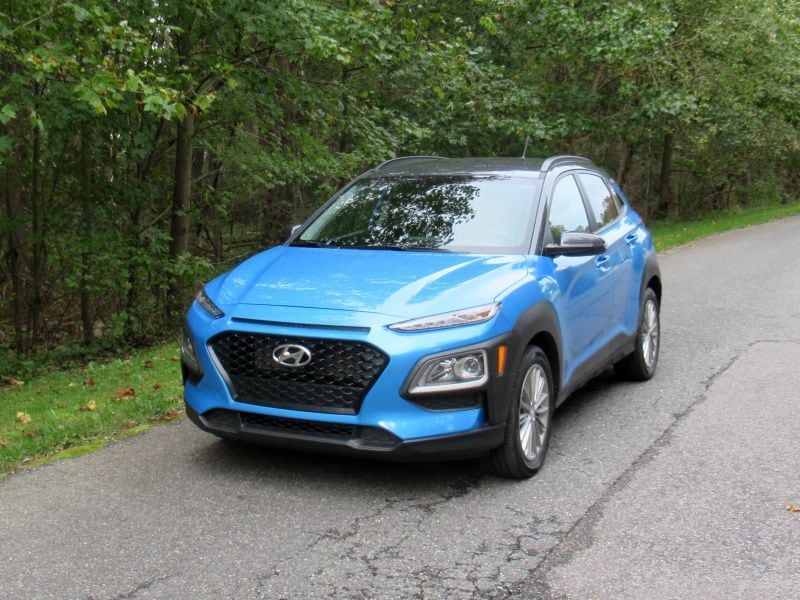
Photo by Brady Holt
A Unique Choice
Not everyone will love the C-HR. Folks who just want a useful utility vehicle might shake their heads at this Toyota’s tight rear visibility, compromised cargo space, and lack of available all-wheel drive. And those who prefer a sporty driving experience could complain that the C-HR looks more fun than it is.
But those criticisms don’t detract from this subcompact crossover’s appeal to the right buyer: It looks like a sporty car without demanding as many compromises. Compared to a true performance vehicle, it has a smoother ride, a lower price, superior fuel economy, and a roomier, more accessible interior. Yet it still brings styling that would turn heads at any auto show. If that combination sounds appealing, you won’t want to miss the 2019 Toyota C-HR — especially given this year's generous list of new upgrades.
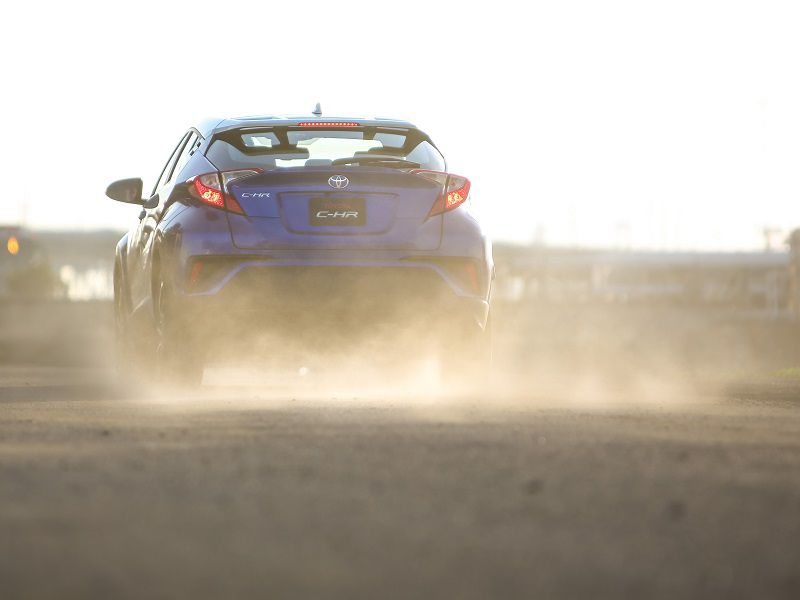
Photo by Toyota